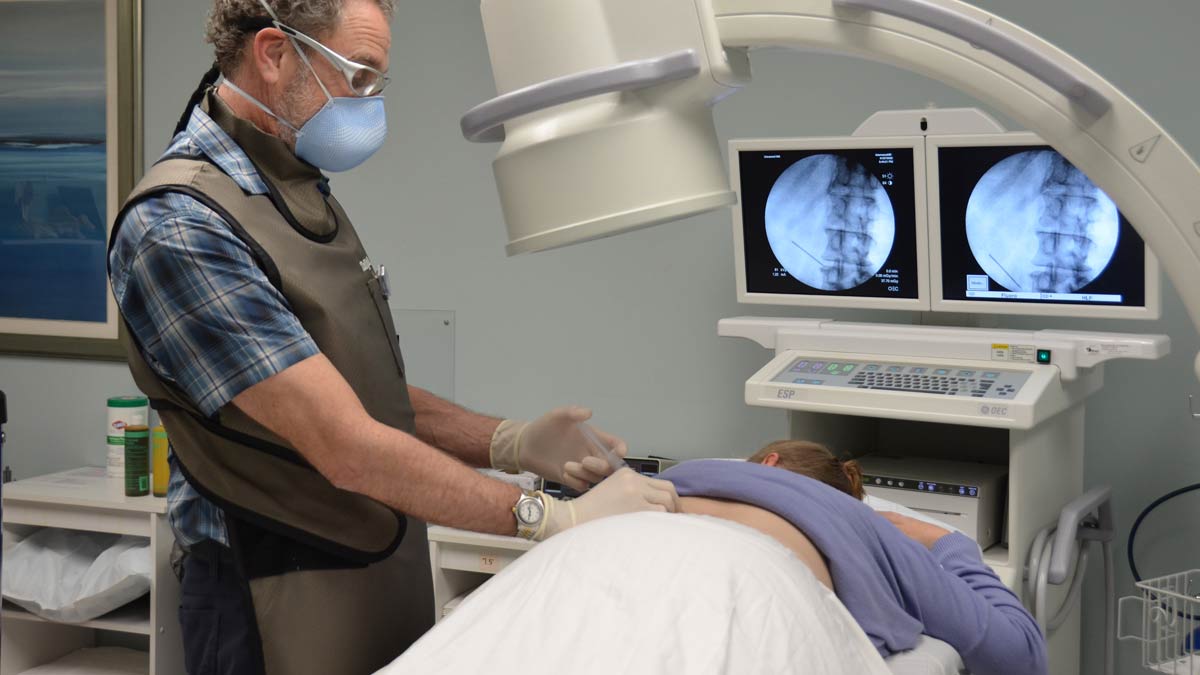You jam your finger, skin your elbow or sprain a bone or muscle, and you soon notice that your body’s defenses are doing everything they can right from the beginning to repair the damage on their own. But these defenses can help damaged tissue only so much because of age, disease, blood or injuries that are too big for them to handle alone.
Currently, major damage to the body often is handled through surgery, skin grafts, blood transfusions and surgical replacements or implants. But in many cases these methods are superseded by the relatively new field of regenerative medicine. Dr. Todd Joye, who specializes in the regenerative field of prolotherapy, is helping to pioneer this new path.
“I added prolotherapy to my practice about four years ago,” said Dr. Joye, a pain management physician in Mount Pleasant since 1999 and owner of InterveneMD. “And while prolotherapy is still being explored, its possibilities for treating certain human injuries are infinite.”
What is prolotherapy, and how might it help you?
Whole Body Repair
Prolotherapy is a regenerative injection technique used to treat structural dysfunctions, primarily of ligaments but also of joints and tendons. These dysfunctional areas may be painful, weak, loose or degenerated.
When ligaments are weakened due to age or injury, bones can shift positions. causing muscles in the area to tighten to prevent excessive movement, thereby creating muscle spasms and pain.
Additionally, too much slippage in the spine can cause it to press on spinal nerves and cause sciatica. In these cases, Dr. Joye said the treatment may require more than just an epidural steroid injection.
“Sometimes, we need to take a bird’s eye view and treat the lower back, for example, as a functional unit, targeting not just the nerve getting pinched but also all the surrounding structures in order to restore the alignment.”
Dr. Joye emphasized the importance of working with physical therapists and chiropractors throughout this repair process.
“These professionals serve a critical role in keeping your bones in alignment as the prolotherapy injections begin to tighten these support tissues,” he said.
At the end of the process, patients are typically able to start maintaining their chiropractic and physical therapy adjustments for longer periods of time.
Roots
The origins of prolotherapy took root in the 1930s, when Philadelphia osteopathic physician Dr. Earl Gedney became the first to use an injection to strengthen sacroiliac ligaments. He called his technique sclerotherapy – but the term gave way to prolotherapy in 1956, when Dr. George Hackett of Canton, Ohio, presented a publication titled, “The rehabilitation of an incompetent structure by the generation of new cellular tissue.”
Dr. Hackett derived the name in part from a Latin word meaning to produce new cells in rapid succession.
Dr. Joye’s own interest came about six years ago when physical therapy and several steroid injections failed to heal a chronic tennis elbow.
“So I had a platelet-rich plasma injection, and my symptoms resolved,” he said. “That experience was the catalyst for me to learn how to apply it to my patients who were not responding to more traditional treatments for their pain.”
Since then, he has become more and more supportive of the treatment, especially since many of his patients who have tried it have had successful outcomes.
“In my experience, with proper patient selection, there’s an 80% to 85% chance that prolotherapy will reduce pain and increase function at least 50% of the time,” he said. “The more successful outcomes occur with patients who are active participants in the recovery and have healthy healing potential with good nutrition, exercise and sleep habits.”
The New Future of Healing?
While its full approval by the medical community is still somewhat pending, prolotherapy is consistently gaining ground as a viable medical treatment.
In 10 studies conducted with 750 participants in 2019 to 2020, the National Institutes of Health in Washington, D.C., concluded in part that “adequately powered, homogeneous and longer-term trials are needed to better elucidate the efficacy of prolotherapy.”
And research from the Mayo Clinic, headquartered in Rochester, Minnesota, determined that, “A combination of prolotherapy and spinal manipulation or back exercises seems to be more effective than prolotherapy alone.”
“Prolotherapy has had a steady rate of acceptance in the medical community and public over the years, but likely will accelerate due to a COVID-induced health awakening,” Dr. Joye said. “More than ever before, patients are thirsty to dig deeper into how their bodies work, how to help it operate at peak efficiency, and how to assist it in healing itself.”
By L. C. Leach III







